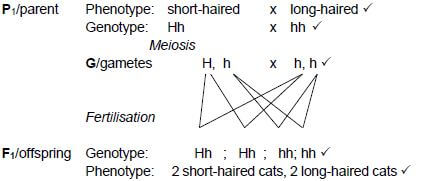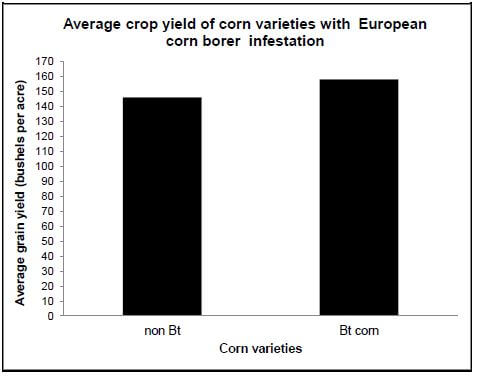LIFE SCIENCES GRADE 12 PAPER 2 MEMORANDUM - NSC PAST PAPERS AND MEMOS SEPTEMBER 2017
Share via Whatsapp Join our WhatsApp Group Join our Telegram GroupLIFE SCIENCES
GRADE 12
PAPER 2
NSC PAST PAPERS AND MEMOS
SEPTEMBER 2017
PRINCIPLES RELATED TO MARKING LIFE SCIENCES 2017
- If more information than marks allocated is given.
Stop marking when maximum marks are reached and put a wavy line and ‘max’ in the right-hand margin. - If, for example, three reasons are required and five are given. Mark the first three irrespective of whether all or some are correct/ incorrect.
- If whole process is given when only part of it is required.
Read all and credit relevant part. - If comparisons are asked for and descriptions are given.
Accept if differences/similarities are clear. - If tabulation is required but paragraphs are given.
Candidates will lose marks for not tabulating. - If diagrams are given with annotations when descriptions are required.
Candidates will lose marks. - If flow charts are given instead of descriptions.
Candidates will lose marks. - If sequence is muddled and links do not make sense.
Where sequence and links are correct, credit. Where sequence and links are incorrect, do not credit. If sequence and links becomes correct again, resume credit. - Non-recognised abbreviations.
Accept if first defined in answer. If not defined, do not credit the unrecognised abbreviation but credit the rest of answer if correct. - Wrong numbering.
If answer fits into the correct sequence of questions but the wrong number is given, it is acceptable. - If language used changes the intended meaning.
Do not accept. - Spelling errors.
If recognisable accept provided it does not mean something else in Life Sciences or if it is out of context. - If common names given in terminology.
Accept provided it was accepted at the memorandum discussion meeting. - If only letter is asked for and only name is given (and vice versa). Do not credit.
- If units are not given in measurements.
Candidates will lose marks. Memorandum will allocate marks for units separately. - Be sensitive to the sense of an answer, which may be stated in a different way.
- Caption.
All illustrations (diagrams, graphs, tables, etc.) must have a caption. - Code-switching of official languages (terms and concepts). A single word or two that appears in any official language other than the learners' assessment language used to the greatest extent in his/her answers should be credited, if it is correct. A marker that is proficient in the relevant official language should be consulted. This is applicable to all official languages.
- Changes to the memorandum
No changes must be made to the marking memoranda without consulting the provincial internal moderator.
MEMORANDUM
SECTION A
QUESTION 1
1.1
1.1.1 B ✔✔
1.1.2 B ✔✔
1.1.3 A ✔✔
1.1.4 A ✔✔
1.1.5 C ✔✔
1.1.6 B ✔✔
1.1.7 A ✔✔
1.1.8 B ✔✔
1.1.9 D ✔✔
1.1.10 C ✔✔ (10 x 2) (20)
1.2
1.2.1 DNA profiling ✔ (DNA fingerprinting)
1.2.2 Uracil✔
1.2.3 Cytokinesis ✔
1.2.4 Ribosome ✔
1.2.5 Deoxyribose ✔
1.2.6 Fossils ✔
1.2.7 Alleles ✔
1.2.8 Extinction✔
1.2.9 Prognathous✔
1.2.10 Locus✔ (10 x 1) (10)
1.3
1.3.1 Both A and B ✔✔ (2)
1.3.2 A only ✔✔(2)
1.3.3 None ✔✔ (2)
1.4
1.4.1 C B E ✔F A D ✔ (2)
1.4.2 In the nucleus ✔(1)
1.4.3 A ✔ D ✔ F ✔ (3)
1.4.4 TGG ✔(1)
1.4.5 Leucine ✔ (1)
1.5
1.5.1 Pedigree ✔ /Genetic lineage diagram (1)
1.5.2 3 ✔ (1)
1.5.3
- Black ✔ fur (1)
- Black ✔ fur (1)
1.5.4
- aa ✔ (1)
- Aa✔ (1)
TOTAL SECTION A: 50
SECTION B
QUESTION 2
2.1
2.1.1 45 ✔ (1)
2.1.2 The are two X chromosomes ✔/ XX / The gonomes are the same. (1)
2.1.3 3 chromosomes present at position 21 ✔ (2)
2.1.4 Downs’ Syndrome ✔/ Trisomy 21 (1)
2.1.5 Nondisjunction ✔ (1)
2.2
- Double stranded DNA unwinds ✔
- and unzips ✔/separate when
- the hydrogen bonds break ✔
- each DNA strand is used as a template ✔
- to form a complementary DNA strand ✔/ A-T and G-C
- using free DNA nucleotides from the nucleoplasm ✔
- Two genetically identical DNA molecules are formed ✔
- This process is called DNA replication / replication* ✔
(Any 6 +*1 compulsory mark) (7)
2.3
2.3.1 3 ✔(1)
2.3.2
- Blood group A ✔ (1)
- IAIB ✔ (1)
- IAIB ✔ IBIB ✔ IBi ✔ (3)
2.4 
- *50% chance of heterozygous offspring ✔
- Parents and offspring ✔/P1 and F1
- Meiosis and fertilisation ✔
(Any 5 + *1 compulsory mark)
OR
P1/parent Phenotype: short hair x long hair ✔
Genotype: Hh x hh ✔
Meiosis
G/gametes H, h x h, h✔
| Gamete | H | h |
h | Hh | hh | |
h | Hh | hh | |
1 mark for correct gametes 1 mark for correct genotypes | |||
F1/offspring Genotype: Hh ; Hh ; hh ; hh ✔
Phenotype: 2 short-haired cats, 2 long-haired cats ✔
- *50% chance of heterozygous offspring
- Parents and offspring ✔/P1 and F1
- Meiosis and fertilisation ✔
(Any 5 + *1 compulsory mark) (6)
2.5
2.5.1 Genetic modification ✔/ genetic engineering (1)
2.5.2
- The Bt corn will have a higher yield than the non-Bt corn ✔✔
OR - The Bt corn will have a lower yield than the non-Bt corn ✔✔
OR - The Bt corn will have similar yield as the non-Bt corn ✔✔ (2)
2.5.3
- Corn variety ✔/ Type of corn (1)
- Average crop yield✔ (1)
2.5.4 The experiment was repeated four times. ✔
(MARK FIRST ONLY) (1)
2.5.5 Bt corn effectively increased crop yield ✔ as it produced poison which killed the ECB worm. ✔ (2)
2.5.6
- Less use of pesticides/herbicides ✔ therefore save money ✔
- Better yields ✔ to create more efficient use of land ✔
- Foods with better texture ✔ therefore reduces wastage ✔
- Food with longer shelf life ✔ can be easily exported ✔
(MARK FIRST ONLY) (Any 1 x 2) (2)
2.5.7 
Mark allocation of the graph
Criterion | Elaboration | Mark |
Type of graph (T) | Bar graph drawn | 1 |
Caption (C) | Includes both variables: average crop yield of two corn varieties with European corn borer infestation | 1 |
X-axis | Equal width of bars AND correct label | 1 |
Y-axis | Appropriate scale, correct label and unit | 1 |
Plotting (P) | 1 bar plotted correctly 2 bars plotted correctly | 1 2 |
NOTE:
- If a line graph is drawn – marks will be awarded for the ‘title and label for X-axis. and Y-axis only.
- If axes are transposed – marks will be lost for the label for the X-axis. and Y-axis. (6)
[40]
QUESTION 3
3.1
3.1.1 Meiosis I ✔ (1)
3.1.2
- Haploid cells produced ✔/ Cells produced have half of the original number of chromosomes
- Homologous chromosomes separate and move to opposite poles at C ✔ (Any 2 x 1) (2)
3.1.3
- C – Anaphase 1 ✔
- D – Telophase1 ✔ (2)
3.2
3.2.1
- After application of the insecticide in 1995 to 1998 there was an increase in the percentage of resistant insects, ✔ from 0,15% in 1995 to 99,10% in 1998. ✔
- The percentage of the non-resistant insects decreased ✔ from 99,85% to 0,90% ✔ (Any 3 x 1) (3)
3.2.2
- There is variation in the insect population ✔
- Some were resistant and some were not. ✔
- When the insecticide was first used, it killed off a large number of non-resistant insects ✔
- Some insects were resistant to the insecticide ✔ and survived ✔
- Those that survived were able to reproduce ✔
- thereby passing on the allele (gene) for resistance to offspring ✔
- Continued use of the insecticide had little effect on the resistant insects ✔
- Hence the resistant insects increased ✔and non-resistant insects decreased. ✔ (Any 6 x 1) (6)
3.3
3.3.1 Speciation ✔ (through geographic isolation) (1)
3.3.2
- The original population ✔ of salamanders
- became separated ✔ into two sub- populations
- *by the central valley ✔
- No gene flow ✔occurred between the two sub-populations
- Each population was exposed to different environmental conditions ✔/selection pressures
- Natural selection occurred independently in each sub-population ✔
- The individuals of each sub-population became different ✔
- genotypically and phenotypically ✔ from each other.
- Even if the two sub-populations were to mix ✔
- they would be unable to interbreed ✔/ reproduce
- resulting in the formation of species B. (Any 5 + 1* compulsory) (6)
3.3.3 In punctuated equilibrium:
- Evolution involves long periods of time where species do not change ✔/ very little change occurs
- This alternates with short periods of time when rapid changes occur ✔
- New species are formed in a short period of time ✔/ relative to the long periods of no/little change.
- Supported by the absence of transitional fossils ✔ (Any 3 x 1) (3)
3.4
3.4.1
- 3 ✔ (1)
- 1 ✔ (1)
- 2 ✔ (1)
3.4.2 Pelvis B ✔ and skull 1 ✔ (2)
3.4.3
Feature | Skull 1 | Skull 3 |
X-foramen magnum | Located in a backward position ✔ | Located in a more forward position ✔ |
Y-brow ridge | Less pronounced ✔ | More pronounced ✔ |
(MARK FIRST TWO ONLY) (2 x 2 + 1 mark for table) (5)
3.4.4 It has the most developed canines. ✔ (1)
3.4.5
- The mitochondrial DNA in the zygote is inherited from the mother. ✔
- Any mutation ✔
- in the mitochondrial DNA ✔can be traced back
- to a female from Africa ✔ (mitochondrial Eve)
- This proves that all women originated from Africa ✔
- and from there her offspring covered the earth. ✔ (Any 5 x 1) (5)
[40]
TOTAL SECTION B: 80
SECTION C
QUESTION 4
Sources of genetic variation: meiosis ✔
- Gametes produced by meiosis are different because of:
- crossing over ✔during first prophase ✔
- random arrangement of chromosomes ✔during first metaphase ✔ and
- second metaphase
Random mating as a source of variation ✔
- In humans and some other mammals, mating takes place between individuals who select mating partners of a particular kind. ✔
- In most other species, mating takes place randomly amongst all individuals within the population ✔ / more than one mating partner
Chance fertilisation of egg cells by sperm cells ✔
- Usually more than one egg cell and sperm cells are produced ✔ and these are all different. ✔
- Fusion of many types of sperm cells and egg cells ✔ can produce many different types of offspring. ✔
Mutations ✔
- Mutations are sudden, random changes in the genetic code of an organism ✔
- A gene ✔ mutation occurs
- as a result of a change in the sequence of nitrogen bases ✔in the DNA molecule
- can result in the formation of a different protein ✔
- leading to new/different characteristics ✔
- A chromosome ✔ mutation occurs
- as a result of a change in the structure / number of chromosomes ✔
- Mutations occurring in sex cells ✔
- are passed on to offspring and new generations ✔
- resulting in new characteristics being formed ✔
Content: (17)
Synthesis: (3)
ASSESSING THE PRESENTATION OF THE ESSAY
Criterion | Relevance (R) | Logical sequence (L) | Comprehensive (C) |
Generally |
|
|
|
In this essay |
|
|
|
Mark | 1 | 1 | 1 |
TOTAL SECTION C: 20
GRAND TOTAL: 150